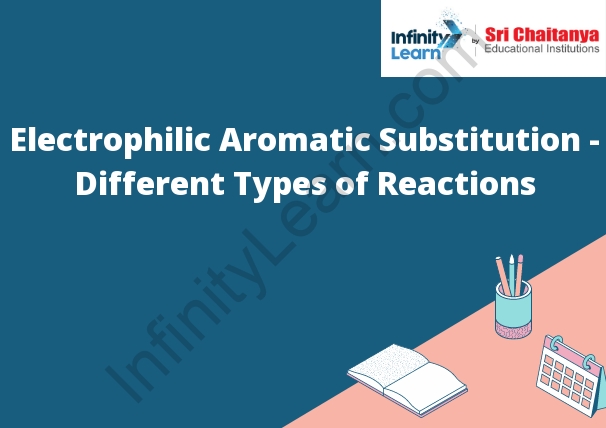electrophilic-aromatic-substitution
The electrophilic aromatic substitution (EAS) reaction is a type of chemical reaction that involves the substitution of an electron-rich atom in an aromatic ring with an electron-poor atom or group. The electron-rich atom is called the electrophile, and the electron-poor atom is called the nucleophile.

An electrophilic aromatic substitution (EAS) reaction is a type of chemical reaction that occurs when an electron-rich aromatic molecule undergoes a substitution reaction by an electrophile. The electrophile attacks the aromatic ring, and the electron-rich part of the ring becomes electron-deficient. This creates a new aromatic ring and leaves the original ring unchanged. There are a number of different types of EAS reactions, but all of them involve the transfer of an electron from an aromatic ring to an electrophile.
Different types of reactions of Electrophile
There are three types of reactions that can take place when an electron-rich aromatic ring is substituted with an electrophile: electrophilic aromatic substitution (EAS), electrophilic aliphatic substitution (EAS), and nucleophilic aromatic substitution (NAS).
In EAS, the electrophile attaches to the aromatic ring at the position of the leaving group. This type of substitution is the most common, and it results in the replacement of the leaving group with a new substituent. The most common electrophiles used in EAS are halogens, such as chlorine or bromine.
In EAS, the electrophile attaches to the aromatic ring at the position of the leaving group. This type of substitution is the most common, and it results in the replacement of the leaving group with a new substituent. The most common electrophiles used in EAS are halogens, such as chlorine or bromine.
In EAS, the electrophile attaches to the aromatic ring at the position of the leaving group. This type of substitution is the most common, and it results in the replacement of the leaving group with a new substituent. The most common electrophiles used in EAS are halogens, such as chlorine or bromine.




